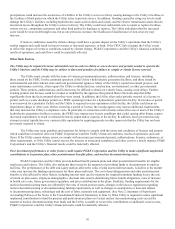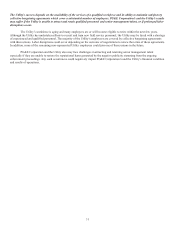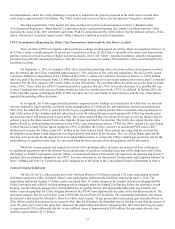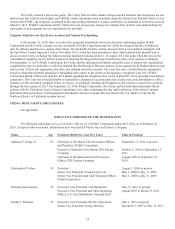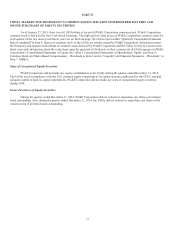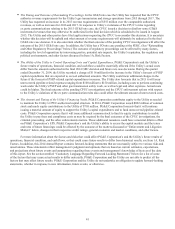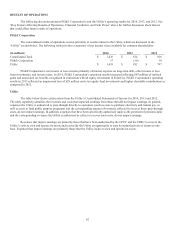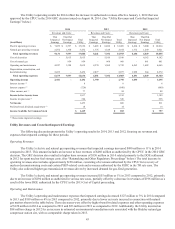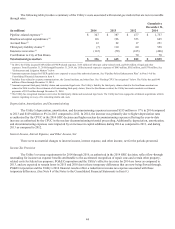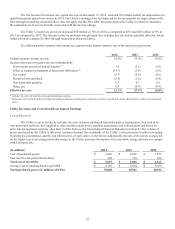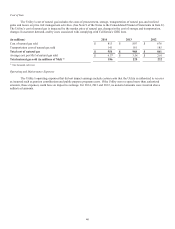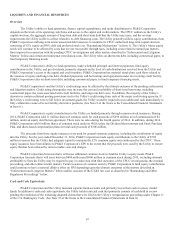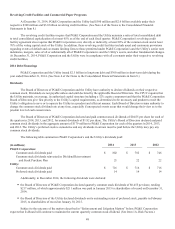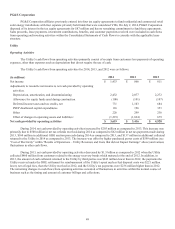PG&E 2014 Annual Report Download - page 47
Download and view the complete annual report
Please find page 47 of the 2014 PG&E annual report below. You can navigate through the pages in the report by either clicking on the pages listed below, or by using the keyword search tool below to find specific information within the annual report.39
ITEM 7. MANAGEMENT’S DISCUSSION AND ANALYSIS OF FINANCIAL CONDITION AND RESULTS OF
OPERATIONS
OVERVIEW
Pacific Gas and Electric Company generates revenues mainly through the sale and delivery of electricity and natural gas to
customers. PG&E Corporation is the parent holding company of the Utility. The authorized revenue requirements set by the CPUC
in the GRC and GT&S rate cases and by the FERC in TO rate cases provide the Utility an opportunity to earn its authorized rates of
return on its “rate base” – the Utility’s net investment in facilities, equipment, and other property used or useful in providing utility
service to its customers. Other than its electric transmission and certain GT&S revenues, the Utility’s decoupling of base revenues
and sales volume eliminates volatility in the revenues earned by the Utility due to fluctuations in customer demand.
The Utility’s revenue requirements are set based on forecast costs. Differences between forecast costs and actual costs can
occur for numerous reasons, including the volume of new customer connections, the detection and mitigation of emerging safety
threats, and the impact of market forces on the cost of labor and materials. Differences in costs can also arise from changes in
laws and regulations at both the state and federal level. Generally, differences between actual costs and forecast costs could affect
the Utility’s ability to earn its authorized return (referred to as “Utility Revenues and Costs that Impacted Earnings” in Results
of Operations below). However, for certain operating costs, such as costs associated with pension and other employee benefits,
the Utility is authorized to track the difference between actual amounts and forecast amounts and recover or refund the difference
through rates (referred to as “Utility Revenues and Costs that did not Impact Earnings” in Results of Operations below). The
Utility also collects additional revenue requirements to recover certain costs that the CPUC has authorized the Utility to pass on to
customers. Therefore, although these costs can fluctuate, they generally do not impact net income (referred to as “Utility Revenues
and Costs that did not Impact Earnings” in Results of Operations below). See “Ratemaking Mechanisms” in Item 1 for further
discussion.
There may be some types of costs that the CPUC has determined will not be recoverable through rates or for which the
Utility does not seek recovery, such as certain pipeline-related costs and fines associated with the Utility’s natural gas transmission
system. The CPUC could also disallow recovery of costs that it finds were not prudently or reasonably incurred. The timing and
amount of the unrecoverable or disallowed costs can materially impact the Utility’s net income, as described more fully below.
This is a combined report of PG&E Corporation and the Utility, and includes separate Consolidated Financial Statements
for each of these two entities. This combined MD&A should be read in conjunction with the Consolidated Financial Statements
and the Notes to the Consolidated Financial Statements included in Item 8.



